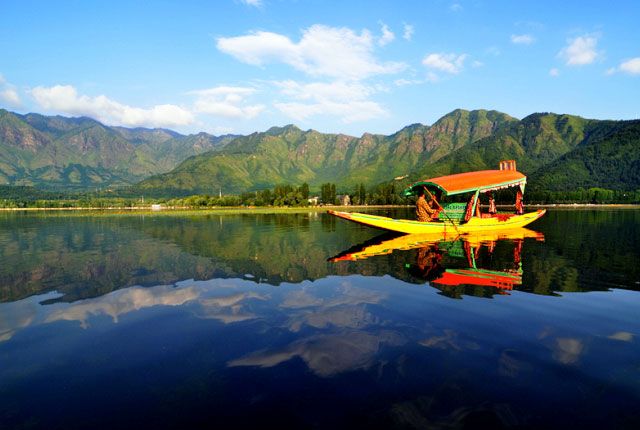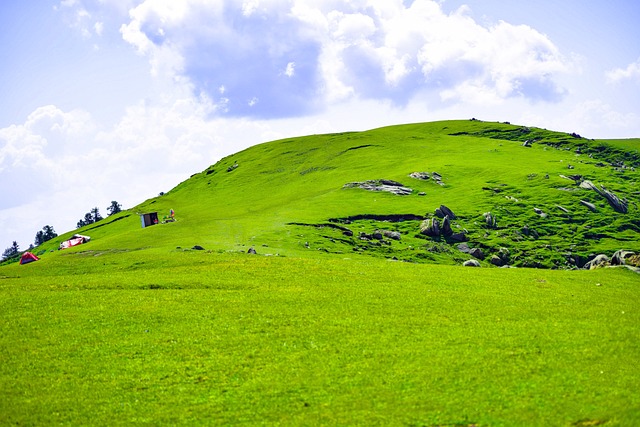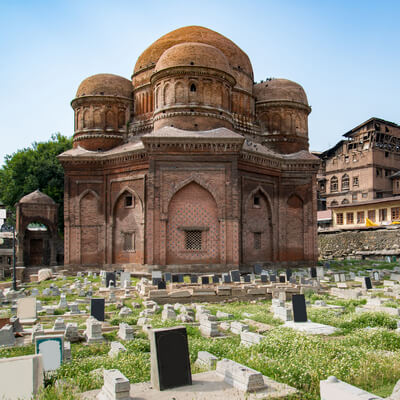
Monuments of Kashmir
Table of Contents
ToggleOverview
Often called the “Paradise on Earth,” Kashmir is a wonderful region renowned for breath-taking sceneries, serener landscapes, and cultural magnificence. This tapestry of monuments of stories of one civilization, empire, or religion all woven into this beautiful tapestry through history, tradition, and architectural splendor. Ancient Buddhist stupas to grand Mughal gardens, sacred Islamic shrines, and so much more, are all crucial components of this regional identity. Monuments of Kashmir from some hundreds of years back depict the information about how this region went through evolution regarding how art, architecture, and culture developed over centuries within this valley. We discuss the glorious different monuments of Kashmir, history and culture attached to these monuments, and why such monuments are important in the pursuit of preserving the heritage of this beautiful land.
Evolution of Kashmir Monuments: A Cultural Timeline
These different cultural influences, dynasties, and religions that left an etched signature on the land characterize Kashmir; these are of course the Buddhist leftovers of ancient times, yet specially from the Mughal and Sultanate epochs most leave many stories, reminiscence, and a lasting watermark as regards history regarding Kashmir.”.
Buddhism Kashmir was once a center, and influence of this religion is also reflected in many monuments, among them stupas and temples dedicated to the Buddhist gods. In consequence of the introduction of Islam, mosques, shrines, and other Islamic monuments began to be erected. They reflect a peculiar combination of Persian and Central Asian architectural styles with native Kashmiri craftsmanship. Later, during the Mughal Empire regime, the popular Mughal Gardens were established. Here, terraced lawns, flowing water, and symmetrical layouts-which are surely quite resembling traditional Persian designs-characterize them.
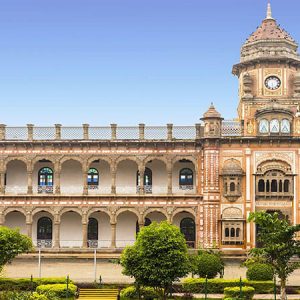
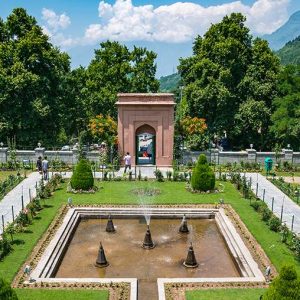
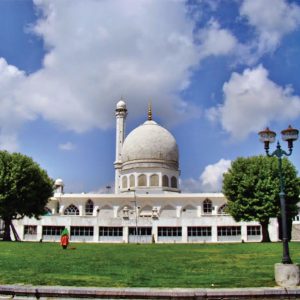
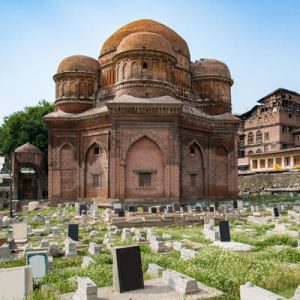
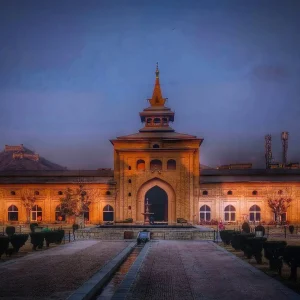
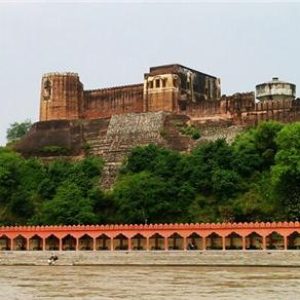
1. Shankaracharya Temple: The Divine Abode of Lord Shiva
This monument symbolises two cultures-historical as well as religious-within it: the Shankaracharya Temple. It lies atop a hill that raises about 1,000 feet above the city of Srinagar, and it is a shrine to the holy man Lord Shiva. For that reason, it greatly matters to Hindus. In this place is named a brilliant Hindu philosopher, Adi Shankaracharya, who is known to have visited in AD 8th century.
Panoramic views of Srinagar, Dal Lake, and surrounding mountains make it a hot destination for Hindus, and simultaneously a tourist spot that could witness the beauty of majestic Kashmir landscapes. Its architecture is a combination of traditional Hindus with local Kashmiri style in terms of stone carvings, wooden structures, and elaborate statues of gods. The temple complex includes a set of stairs leading to the temple, a shrine dedicated to Lord Shiva, and a vast courtyard that perfectly suits the purpose of meditation and spiritual thinking.
2. Mughal Gardens: The Quintessential Symbol of Mughal Architecture
Mughal Gardens of Kashmir are highly appreciated for their magnificence beauty and are at the height of Mughal horticulture and landscape designing. The Mughal emperors constructed these gardens in the 16th and 17th centuries with the motive to depict paradise on earth. The Mughal emperors, especially Emperor Akbar, Jahangir, and Shah Jahan, were much fond of the beauty of Kashmir and decided to have it as their summer capital.
Nishat Bagh
Nishat Bagh is the “Garden of Joy” and the largest of the Mughal gardens in Kashmir. This amazing garden was built by Asif Khan, brother-in-law to Emperor Jahangir, in 1633. Constructed in the style of the Persian Chahar Bagh, the garden features stepped levels, running water, and a sequence of fountains falling down from the upper levels. Nishat Bagh is very scenic because it provides very good views of Dal Lake and the surrounding mountains, therefore, it has become a favorite relaxation place and to see the beauty of Kashmir.
Shalimar Bagh
The Shalimar Bagh was constructed by Emperor Jahangir in the early 17th century as a gift for his wife, Nur Jahan, also known as “Garden of Love.”. This garden is a ravishing blend of Mughal and Persian influences, with a central canal running through the garden, with fountains and lush greenery alongside it, divided into three terraces, and surrounded by tall trees to provide shade, and give the impression that the place is peaceful. Other attractions at the Shalimar Bagh are also ornate Mughal style pavilions, and fountains that are attributed to the grandeur of Mughal times. The place is also known as the Royal Spring, which has a past associated with the construction by one of the most favourite emperor’s Shah Jahan around the year 1632 AD, and it is counted one among the most beautiful in the capital town Srinagar. It is known for its beautiful fountains, stepped formations and great views of the hill ranges and Dal Lake surrounding it. It is said that the spring found by the legendary Mughal aristocrat Dara Shikoh is the main attraction of the garden. Chashme Shahi is comparatively a more compact garden than Nishat and Shalimar Bagh but equals those in beauty in their designs.
3. Jamia Masjid Srinagar: An Exquisite Blend of Indo-Saracenic Architecture
The Jamia Masjid of Srinagar is the greatest mosque in Kashmir, so beautiful an example of Indo-Saracenic architecture, built in 1394 by Sultan Sikandar, and famous for its original wooden structure, so much different from stone mosques elsewhere. Kashmiri woodwork, which had a characteristic of its own, is there woven into the Islamic style, a characteristic of its architecture.
It boasts of intricate carved wooden pillars, arched doorways, and a large scale detailing of inscriptions both in Persian and Arabic. Hundreds of people can be accommodated within its prayer hall. As there is a peaceful ambiance prevailing at this place, this becomes an important worshipping centre for the Kashmir people. Its design comprising elements from central Asian, Persian, and Kashmiri styles that formed one and gave this place uniqueness different from others in this region.
4. Shah-i-Hamdan: Sufi Shrine of Kashmir
Shah-i-Hamdan or the Khanqah of Shah Hamdan is one of Kashmir’s most prominent Sufi shrines. Dedicated to the Persian Sufi saint Mir Syed Ali Hamdani, who in the 14th century came into Kashmir and introduced Islam there this shrine is a fine example of Kashmiri Islamic architecture, built during 1395, intricately carved wooden work adorned the shrine along with paintwork on ceilings and serene environments.
The shrine reflects the magnificence of its artistic designs with beautiful wooden carvings, arches, and columns. On account of its Sufi influence, it heightens the peaceful setting and brings Shah-i-Hamdan more to the core of contemplation and devotion. Being a poignant feature of cultural and religious heritage in respect of Kashmir’s Sufistic tradition, the shrine is an integral part.
5. Buddhist Monuments of Kashmir: A Peep into the Ancient History of the Region
Kashmir was once a land of Buddhism. The region is full of ancient Buddhist monuments dating back to the 1st century AD. Most of these sites are destroyed or in ruins, but they still form a vital part of Kashmir’s historical and cultural heritage.
Buddhist Monastery at Hemis
Hemis Monastery is one of the most famous Buddhist monasteries in the Ladakh region of Kashmir. Although built in the 17th century, this monastery still holds importance for Kashmir’s Buddhist heritage. The Hemis Festival, which is celebrated yearly at this monastery, happens to be one of the biggest and most energetic Buddhist festivals in the region. Colourful dances, music, and rituals associated with the life of the founder of Tibetan Buddhism are performed during the festival.
Ancient Buddhist Stupa at Awantipora
This one is at Awantipora, near Pahalgam. The two major archaeological sites of the Buddhists in Kashmir are located at Awantipora. These two ruins comprise the two ancient Buddhist stupas. According to the historians, they were raised by King Avantivarman in the 9th century AD. Once, they would be beautified with carved out carvings and decorated with various statues. They represent a stretch of time when Buddhism flourished under the Kushan Empire and reigned in Kashmir. The remains provide a glimpse into the forgotten past of Kashmir under Buddhism.
6. Wular Lake: A Natural Monument of Kashmir
Not a man-made monument, Wular Lake is the most historically and culturally significant monument in Kashmir. It is Asia’s largest freshwater lake, situated in the Bandipora district of Kashmir. It is very important for the region’s ecology and, over the course of history, had been an important place for trade and transportation.
Wular Lake is one of the most important natural land marks in Kashmir and has been described as the “Pearl of Kashmir.” It is full of lush greenery and beautiful views of the mountains all around. The lake provides shelter to various species of birds, so it can be termed as a haven for birdwatchers and lovers of nature. Historically, Wular Lake has been an important hub of trade routes that have been necessary to link Kashmir with Central Asia.
7. Roza Bal Shrine: Mystical and Controversial Monument
Some of the most debated monuments in Kashmir are the Roza Bal shrines. Many believe it to be the burial ground of Jesus Christ though very few historians or scholars of religion resonate with such a claim. Most remain puzzled at Roza Bal Shrine. The structure is quite simple, consisting of a small room, a tomb, and some inscriptions, that symbolize Christian symbols for some.
The Roza Bal Shrine is very beautiful, and people are attracted to its place; some come to find out what history it holds, while others come there to spend quiet life in that region. After all that mystic appearance, the shrine has always been one of the major religious monuments in Kashmir.
Conclusion
The monuments of Kashmir reflect the rich history of the region and the diverse cultural heritage. Among these are ancient Buddhist structures, magnificent Mughal gardens, sacred Islamic shrines, among others, which represent a combination of different civilizations, religions, and architectural styles. Each monument in Kashmir tells a unique story about the people who built it, the rulers who commissioned it, and the rich cultural legacy that continues to shape the region today.
These monuments should be preserved so that the history of Kashmir will not be lost and passed down to future generations. Whether a historian, architecture lover, or a lover of beauty and culture, the monuments of Kashmir are an interesting journey through time and space showing the region’s legacy as a crossroads of the world’s cultures.
How to book Kashmir tour?
Contact a travel agency that specializes in Kashmir tours. You can reach out to the following for assistance:
- Phone:
- +91 7889 655596
- +91 7006 891267
- Email:
Inquire about tour packages, itineraries, and pricing, and confirm your booking for a memorable winter experience!
People Also Ask
What are some famous monuments in Kashmir?
Some famous monuments in Kashmir include the Shankaracharya Temple, Mughal Gardens (Shalimar Bagh, Nishat Bagh, Chashme Shahi), Hazratbal Shrine, Jamia Masjid, Shah-i-Hamdan, and Mughal Road.
What is the historical significance of Kashmir’s monuments?
Kashmir’s monuments reflect its rich cultural and religious history, influenced by Hindu, Buddhist, and Islamic traditions. They showcase architectural marvels from different dynasties, especially the Mughal era.
Which Mughal monument is most famous in Kashmir?
The Mughal Gardens like Shalimar Bagh, Nishat Bagh, and Chashme Shahi are the most famous Mughal monuments in Kashmir, built by Mughal emperors to resemble the Persian paradise gardens.
What is the architecture style of Kashmir’s monuments?
Kashmir’s monuments feature a mix of Islamic, Mughal, and Kashmiri Pandit architectural styles, often blending Persian, Hindu, and Buddhist elements in their designs.
What is the Shankaracharya Temple?
The Shankaracharya Temple is a Hindu temple dedicated to Lord Shiva, situated on a hilltop in Srinagar, offering a panoramic view of the city and Dal Lake. It is a significant pilgrimage site for Hindus.
Where is the Hazratbal Shrine located?
The Hazratbal Shrine is located on the northern banks of Dal Lake in Srinagar. It is a revered Muslim shrine housing a relic believed to be the hair of the Prophet Muhammad.
What is the significance of the Jamia Masjid in Srinagar?
The Jamia Masjid in Srinagar is an ancient mosque known for its Kashmiri-style architecture, built in 1394. It holds religious importance for Muslims and is an iconic landmark of Srinagar.
Why is the Mughal Road important?
The Mughal Road was built by Mughal emperors to connect Kashmir with other parts of India. The road is dotted with historical monuments, caravanserais, and forts and holds great historical significance.
What is the role of Shah-i-Hamdan in Kashmir’s architecture?
Shah-i-Hamdan is a mosque dedicated to a prominent Sufi saint, and it represents the Kashmiri Islamic architectural style with intricately carved wooden interiors. It has influenced the architecture of many mosques in the region.
What are the architectural features of the Mughal Gardens in Kashmir?
The Mughal Gardens in Kashmir feature terraced lawns, flowing water channels, fountains, and symmetrical layouts, inspired by Persian gardens. These gardens, such as Shalimar Bagh and Nishat Bagh, emphasize harmony with nature.
What is the historical importance of the Martand Sun Temple?
The Martand Sun Temple, located near Anantnag, is a famous Hindu temple dating back to the 8th century. It is an example of Kashmiri Hindu architecture, showcasing intricate stone carvings and the region’s pre-Islamic history.
What are the most visited historical sites in Kashmir?
Some of the most visited historical sites in Kashmir are the Shankaracharya Temple, Mughal Gardens, Hazratbal Shrine, Jama Masjid, Martand Sun Temple, and Khanqah of Shah Hamdan.
What are the key features of the Shankaracharya Temple?
The Shankaracharya Temple is situated on a hilltop, accessible by a steep climb. It is known for its spiritual significance and offers breathtaking views of Srinagar and Dal Lake.
What can I see at the Tomb of Zain-ul-Abidin?
The Tomb of Zain-ul-Abidin in Srinagar is dedicated to one of the greatest rulers of Kashmir. It is famous for its simple yet elegant architectural style, reflecting the king’s role in Kashmir’s cultural development.
Is there any Buddhist architecture in Kashmir?
Yes, Kashmir is home to ancient Buddhist monuments, including the ruins of Buddhist stupas and monasteries in places like Parihaspora and Aishmuqam, showcasing Kashmir’s Buddhist heritage.
What is the significance of the Kheer Bhawani Temple?
The Kheer Bhawani Temple is dedicated to Goddess Ragnya Devi and is located near Srinagar. It holds immense religious importance for Kashmiri Pandits and is known for its holy spring and annual pilgrimage.
Where is the Naqshband Sahib Shrine located?
The Naqshband Sahib Shrine, dedicated to the famous Sufi saint, is located in Shahdra Sharif, around 12 kilometers from Srinagar. It is an important site for both religious and cultural tourism.
What is the history behind the Roza Bal Shrine?
The Roza Bal Shrine in Srinagar is a site associated with the tomb of Jesus Christ, as per some theories. It is visited by people of various faiths due to its unique spiritual and historical significance.
What is the Chatti Padshahi Gurudwara?
The Chatti Padshahi Gurudwara in Srinagar is an important Sikh shrine, dedicated to Guru Hargobind. It is located near Dal Lake and is an important place of worship for Sikhs.
Can I visit the monuments of Kashmir year-round?
Yes, most of Kashmir’s monuments, including the Mughal Gardens, temples, and shrines, are open year-round. However, during the winter months (November to February), some sites may be less accessible due to snow and cold weather.
What role did the Mughal Empire play in Kashmir’s monuments?
The Mughal Empire played a significant role in shaping Kashmir’s architectural landscape, constructing grand Mughal Gardens, palaces, and mosques that are still revered today for their beauty and historical significance.
What are the architectural features of Kashmiri temples?
Kashmiri temples typically feature wooden structures, intricate carvings, and small shrines. The Martand Sun Temple is an iconic example of Kashmiri Hindu temple architecture.
What are some famous forts in Kashmir?
Some famous forts in Kashmir include Hari Parbat Fort, Chak Fort, and Khrew Fort, each offering a glimpse into the region’s royal history and military architecture.
What is the role of Kashmir’s shrines in local culture?
Shrines in Kashmir, such as Hazratbal Shrine and Shah-i-Hamdan, play an integral role in the local culture, representing Kashmir’s religious harmony and deep spiritual traditions. They are pilgrimage sites for both Muslims and Hindus.
Are there any monuments in Kashmir related to Sufism?
Yes, many monuments in Kashmir are related to Sufism, such as the Shah-i-Hamdan Shrine and the Naqshband Sahib Shrine, which are important centers of Sufi culture and teachings in the region.



